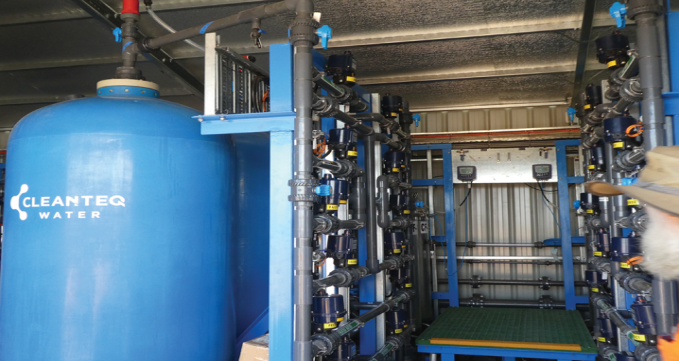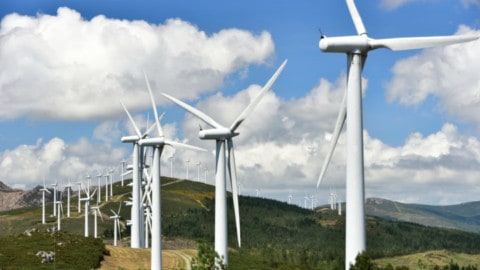In response to water security concerns in the remote First Nations community of Laramba, Power and Water Corporation delivered a new water treatment plant to address the urgent need to improve water services in remote Aboriginal communities.
Located some 200 km North-west of Alice Springs in the Northern Territory, the remote community of Laramba has long faced the challenge of relying on groundwater with elevated levels of naturally occurring uranium, exceeding the Australian Drinking Water Guidelines (ADWG).
In response to community concerns and advocacy, the Power and Water Corporation undertook a significant project to address this issue.
Engaging CleanTeQ Water, the project, delivered under the Northern Territory Government’s $28 million commitment to water security, showcases innovative ion exchange water treatment technology.
Selecting ion exchange for uranium removal
After a meticulous technology assessment study, ion exchange emerged as the optimal water treatment solution. Its advantages, including low waste volumes, minimal power consumption, adaptability to changing feed compositions, and a proven track record in remote locations, made it the ideal choice. The project aimed to not only meet the ADWG uranium level standards but also enhance long-term social, financial and health benefits for the Laramba residents.
Challenges and solutions
Undertaking the project in a remote location and within a tight six-month timeframe posed significant challenges. CleanTeQ Water was engaged to deliver the plant under a design and construct contract. The scope of work included upgrading existing equipment, expanding the bore compound, replacement of bore pumps, and installation of tanks, new buildings and the water treatment plant. The 360m3/day plant, equipped with an acid dosing system for pH correction and a salt system for regeneration, features two parallel ion exchange treatment trains operating in a lead-lag configuration.
Custom design for site-specific needs
CleanTeQ Water’s custom-designed ion exchange system addressed Laramba’s specific water quality challenges. Rigorous testing ensured that the plant would provide effective long-term uranium removal with optimised efficiency and minimal waste generation. The use of wireless telemetry instrumentation for remote monitoring further demonstrates the project’s innovative approach.
Advanced automation for reliable operation
Given the remote location, the fully automated plant incorporates real-time monitoring of the control, electrical and mechanical systems. This advanced system allows for the proactive identification and resolution of potential equipment issues, thereby preventing possible failures.
Successful outcome
Following completion of the project in December 2022, the plant underwent an 8-week validation period – during which the reduction of uranium levels was demonstrated from an average of 0.033mg/L to undetectable levels of <0.0001mg/L. Connected to the Laramba community water supply on 17 April 2023, the plant was officially launched on 26 April, with community members expressing delight at the improved water quality.
Community engagement and support
Throughout the project, Power and Water prioritised community engagement to build trust and support by implementing a comprehensive Community Engagement Plan, including meetings with the Minister for Essential Services and other key stakeholders to outline the project.
The community actively participated in the official opening, seeing the ion exchange process for themselves and gaining confidence in the treated water. The positive feedback during the launch highlighted the success of community involvement in the project.
National significance
The Laramba Water Treatment Plant project aligns with national priorities in the Australian water industry, addressing the urgent need to improve water services in remote Aboriginal communities. Initiatives like the Closing the Water for People and Communities Gap report and the Australian Water Association’s Strategy’25 emphasise the importance of collaboration and sustainability in water management.
Multi-dimensional benefits
The project has produced significant social, environmental, economic and cultural benefits. Improved health outcomes, social equity and reduced environmental impact through minimal uranium-bearing waste highlight the project’s success. Economic benefits include supporting a growing and thriving community, fostering long-term development and economic prosperity.
Cultural relevance
Recognising the deep cultural connection of Aboriginal communities to water, the project contributes to the preservation of cultural, spiritual and social identity. By ensuring safe and reliable water supplies, the water treatment plant positively impacts the physical and spiritual well being of the Laramba community.
 Acknowledging commitment and success
Acknowledging commitment and success
The Laramba ion exchange water treatment project is a shining example of success in addressing water quality challenges and fostering community development.
Its positive impact on health, community engagement, cultural preservation and environmental sustainability serves as a model for future initiatives. As the Australian water industry continues its journey to close the gap, projects like these exemplify the transformative power of collaboration, innovation, and commitment to ensuring safe and reliable water for all communities.
The success of the Laramba Water Treatment Plant project has not gone unnoticed. It has received widespread acclaim, winning the 2023 Chief Minister’s Awards for Excellence in the Public Sector and the NT Infrastructure Project Innovation Award in partnership with Clean TeQ Water. These accolades highlight the significance of the project in the broader context of providing safe and secure drinking water in remote communities.
The Laramba Water Treatment Plant project is a testament to the commitment of Power and Water, Clean TeQ Water and the Northern Territory Government in improving water security in remote communities in the Northern Territory. Power and Water is advancing work to improve water security in neighbouring communities, including Yuelamu and Yuendumu.
Providing safe and secure drinking water throughout the Northern Territory is paramount in supporting the long-term social and health benefits for all Territorians.












